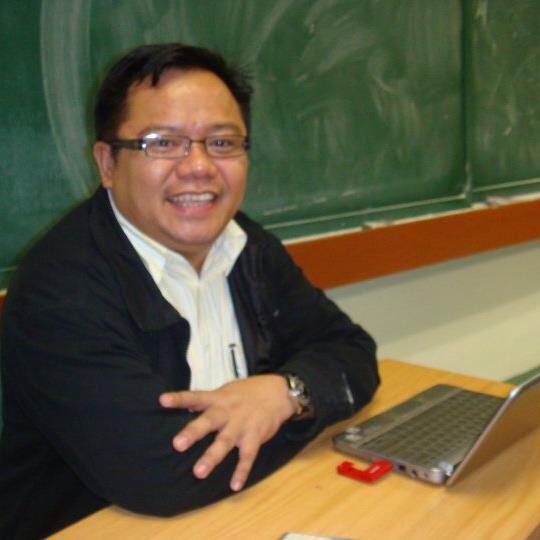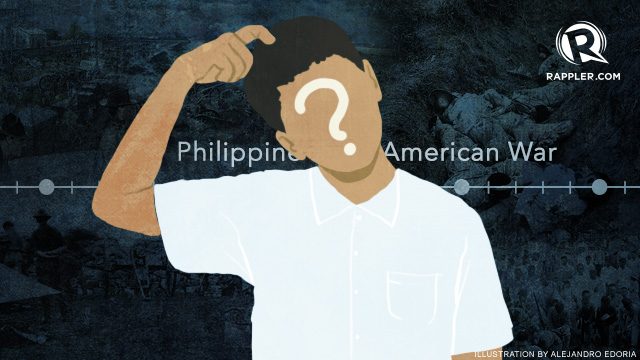SUMMARY
This is AI generated summarization, which may have errors. For context, always refer to the full article.

I would ask them to do a phrase or sentence outline on Philippine History. I give them this scenario to kick off the classroom activity (yes, can’t assign it, I need to make sure they’re using their stock [or stuck] knowledge):
“Imagine you were asked by an alien, a non-earthling, to relate to her in summary fashion the history of our nation/country. How would you tell our story? Write an outline…”
Twenty years ago, when I first did this in class, I had a most unsettling realization much like Epy Quizon’s surprised reaction to the question posed to him by a group of college students regarding his role as never-standing Mabini in Heneral Luna.
I saw a clear pattern after reading hundreds of students’ outputs.
Our students – even after years of basic education from the best and most expensive schools in the country – didn’t know much about the Philippine-American War. In fact, it was a blind spot in many of their outlines. Many of them would churn out something like this (edited output of one of my students, a first year Polsci student in 1998):
I. Philippine Pre-history
A. Waves of migration
B. Tabon caves
C. Trade with China
II. Spanish period
A. Magellan arrives in 1521
B. Rizal is shot at Luneta
C. KKK is founded
III. American period
A. America gives us independence and teaches us democracy
B. Quezon becomes Commonwealth President
IV. Japanese occupation
A. Death march
B. MacArthur returns
C. Japan surrenders
V. The Philippine republics
A. Post-war reconstruction
B. Marcos becomes President
C. Ninoy assassination
D. EDSA revolution and Cory
Seems innocent enough, right?
But I realized, where was the Philippine-American War? Why merely refer to it as a “Period”?

Do our students know that there are estimates which put the Filipino death toll in that war at around 300,000 (1/3 of Luzon’s population at that time)? Do they know that the Americans developed the Caliber .45 hand gun precisely to fight Moros in Mindanao, who could not be easily brought down by gunfire especially when they went juramentado (martyrdom charge) in defense of their communities?
Do they know that the Mindanaoans were never really fully colonized by the Americans (it’s the “independent” Philippine governments that did that later)? Do they know that Luna is supposed to have refused to fight against the Spaniards and thus gained the ire of some Filipinos? Do they know that Mabini is inconsistent in his views on both Luna and Aguinaldo?
And “Philippine Pre-history”? The subliminal suggestion is that we didn’t have any history before Westerners came to our archipelago.
Factors
The question then is raised: Why are our students weak in Philippine history and social studies in general? The answer will need a whole history tome to answer. But here’s my take:
1. We have failed to take care of our teacher training institutions and our public school teachers. The Philippine Normal University (PNU) has been “maltreated” through the years. Teachers have had to resort to hunger strikes just to push for higher wages. Napabayaan! (Taken for granted!)
2. Textbooks are of low quality, full of questionable content and orientation (colonial, as some point out).
3. Pedagogy has not been learner-centered. Students are not educated to be critical thinkers but are trained to be submissive subjects.
Heneral Luna
It is in light of these that I warmly welcome Heneral Luna in our movie theaters and I am lifted by all the accolades that it is now getting. At the very least, it is making people ask questions about our supposed heroes. At the very least, it is inspiring some students to be historiographers.
On a side note, I find it timely that this masterpiece by Jerrold Tarog is released around the time we are also supposed to remember the imposition of Martial Law in 1972. There must be a nuanced distinction between the notion of an Artikulo Uno and the need for Martial Law in ’72.
Tragically, our education system has also molded many citizens who are now apparently ready to surrender their rights to the false notion of a benevolent dictatorship and in the name of some form of peace and order – the kind one finds in a cemetery.
Sa kabila nito, naniniwala pa rin ako sa Filipino. Ang mga palakpak at papuri sa pagtatapos ng bawa’t pagpapalabas ng Heneral Luna ay patunay na uhaw sa katotohanan ang ating Bayan. (Despite all this, I still believe in the Filipino. The applause and praise after each showing of Heneral Luna is proof that our nation thirsts for the truth.)
Hindi lamang tayo – ayon nga sa tanong sa dulo ng pelikula – mga “alikabok na nag-aalimpuyo.” (We are not – according to the question at the end of the film – just dust that turns fiery.)
Tayo’y mga daluyong ng pag-asa’t pagbabago. Tayo’y Filipino. (We are waves of hope and change. We are Filipino.) – Rappler.com
Louie Checa Montemar is a lecturer of Political Science at De La Salle University and National Coordinator of the Lasallian Educational Commission of De La Salle Philippines. In his spare time, he is a volunteer education and community development worker of ENFANCE Inc, an NGO dedicated to dealing with urban poverty.
Add a comment
How does this make you feel?
There are no comments yet. Add your comment to start the conversation.